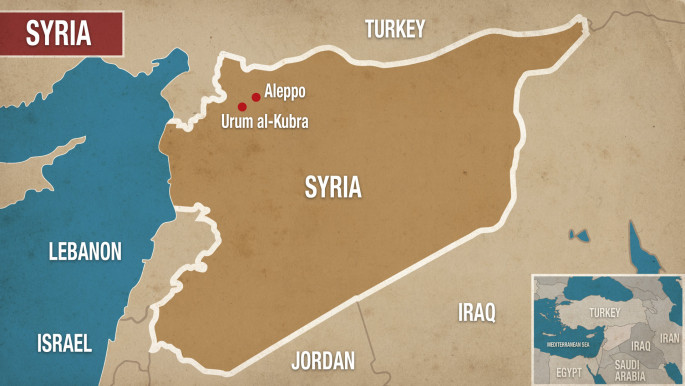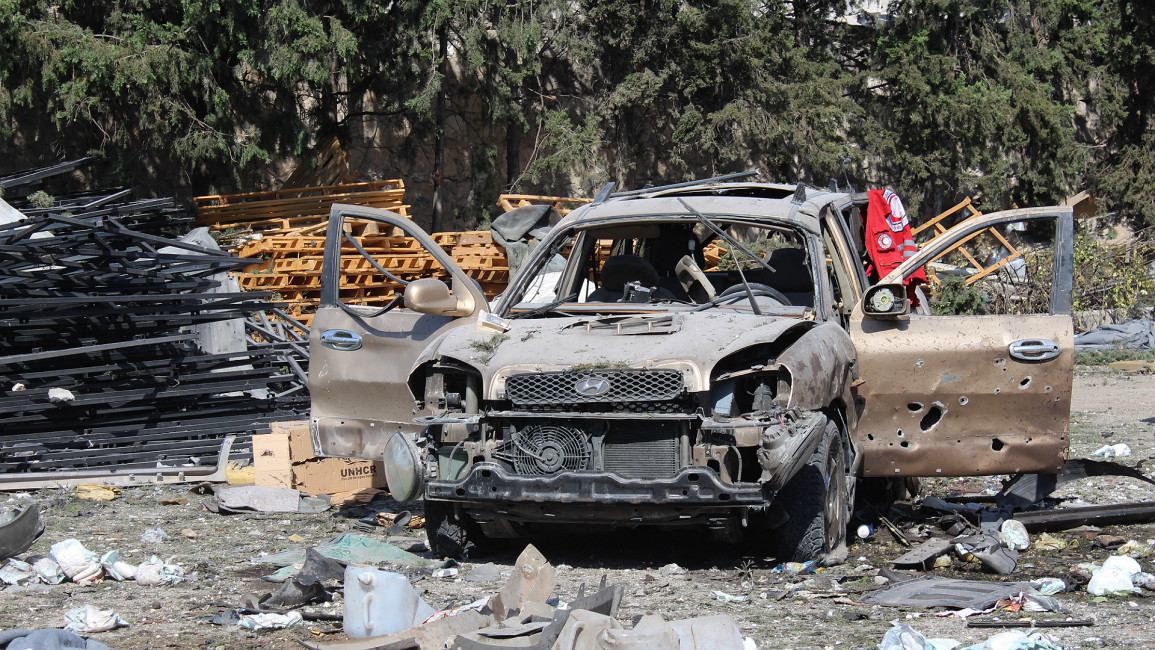'Russian bomb remains recovered' from Syria aid convoy attack
On Monday night a Syrian Arab Red Crescent aid convoy was targeted by a purported airstrike in the Aleppo suburb of Urum al-Kubra resulting in 20 civilian deaths.
The attack signalled the end of a US-Russian brokered ceasefire that began in Syria on September 12 and has threatened aid distribution inside the war-torn country. Fighting has since resumed on several major fronts within Syria.
A post on the website Bellingcat, a forum for investigative journalism that uses open source investigation tools and techniques, claims that photographic evidence from the site of the attack appears to show the tail section of a OFAB 250-270 bomb amidst a pile of rubble and medicine.
 |
|
Such claims have also been made by the Conflict Intelligence Team, a group of Russian investigative bloggers founded in 2014 that monitor Kremlin's military movements.
Bellingcat had been in contact with a Syrian Civil Defence team working in Urum al-Kubra that had provided photographs of the detached segments of the OFAB 250-270 at the site of the attack before recovering the munitions debris for closer examination.
The OFAB 250-270 is a high explosive, unguided, fragmentation bomb originally produced in the Soviet Union during the Cold War.
Eliot Higgins, the founder of Bellingcat, said that they have been used extensively by Russian and Syrian aircraft operating over Syria and are not used by aircraft manufactured by NATO countries, or by Predator drones operated by the US.
“It (the OFAB 250-270) is among the most commonly used bombs in Syria,” Higgins told The New Arab.
“Judging from images of the scene (in Urum al-Kubra) it looks like it did not fully explode. There is not a huge amount of destruction around it and the fragments of the fin that were recovered are intact.
"The configuration of the tail fin is unique to this kind of bomb,” continued Higgins explaining the methodology by which Bellingcat were able to determine the use of the specific form of munition.
 |
Every time Syria and Russia are accused of something in Syria – whether it is using cluster bombs, chemical weapons, or this latest incident on the aid convoy in Aleppo – pro-Russian bloggers and activists just say the evidence has been planted |  |
Higgins said that in his four years of identifying weapons used in different contexts of Syria’s Civil War he has regularly faced accusations that the evidence he relies on has been planted, or is unreliable.
In 2013 Higgins faced criticism from figures including Theodore Postol, a professor at the Massachusetts Institute of Technology, and Richard Lloyd, a former UN weapons inspector, over some aspects of his investigation into chemical attacks, perpetrated by the Syrian regime, in the Damascus suburb of East Ghoutta.
In particular Postol and Lloyd accused Higgins of “changing his facts” as new technical information arose to challenge his conclusions.
“Every time Syria and Russia are accused of something in Syria – whether it is using cluster bombs, chemical weapons, or this latest incident on the aid convoy in Aleppo – pro-Russian bloggers and activists just say the evidence has been planted. It is a typical lazy response that does not take into account the evidence,” said Higgins.
Regarding the aid convoy attack in Urum al-Kubra, Higgins pointed out that he was not reliant on the recovery of fragments of the OFAB 250-270 alone as evidence that an airstrike had taken place.
Moscow has however denied any involvement. Russian Defence Ministry spokesman Igor Konashenkov claimed that videos recorded at the scene of the attack showed no evidence of "munitions hitting the convoy," instead attributing the destruction to "a fire".
But videos recorded on the ground at the time of the attack show a dark still night sky, broken by red-orange bursts of flame, accompanied by loud reverberating bangs. Panic-stricken voices relay the presence of aircraft in the area, and that aid cars have been hit.
“From the open source material we can see that it was not just a fire. In addition to the videos taken at the time of the attack we can see for example fragmentation damage on vehicles in the area, in addition to a crater,” said Higgins.
“To claim it was caused by a fire is an outright lie.”



